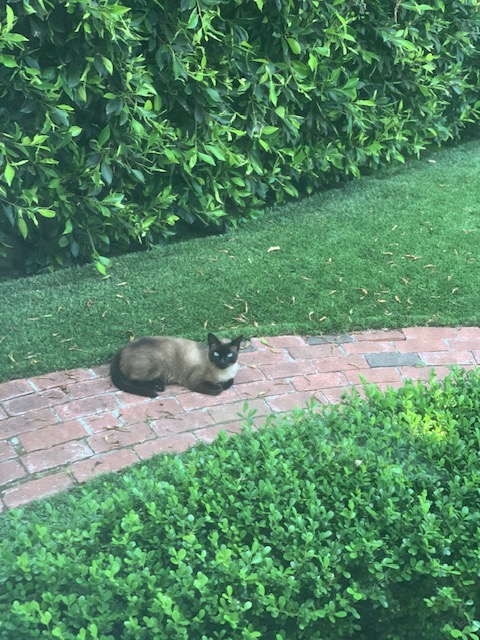Meruvina Music Archeology

Blue eyes amidst a sea of green. One of three little angels dwelling in the garden.
So fascinating going back to adjust the setting of a composition from 2004. Prior to recording Natabhairavi, I made some last minute orchestration changes for roughly the last fifteen minutes of the hour-long piece I thought were divine. However, listening to this recording on subsequent occasions, I was horrified by those modifications - what was I thinking? The alterations had been made in a hurry, which is almost never a good idea – rushing comes from the devil. Now, with a new album featuring the same meruvina incarnation deployed for Natabhairavi ready to be recorded, something I haven't used since 2013, this was my chance to make good. Each meruvina incarnation is unique, and it takes a period of time to reacclimate after putting one aside for another. More than that, my compositional and orchestration tendencies were different before, which is a fortunate thing, of course, how I always seem to be evolving. How carefully all the timbres were chosen, I found, just like now, and how meticulously calibrated were all the levels and effects subtleties. I found myself truly admiring this fellow who was myself a while back. At times, I even felt like becoming him again. And perhaps some of that past flavor will now reemmerge, having gotten under the hood of what makes Natabhairavi run. Natabhairavi now has four main melodic voices in turn, consisting of piri, trumpet, cimbalom and clarinet. Together with the melodic voices is a through-composed composite skin drum voice that grows in complexity and number of bols for each section. Additionally, there are coloristic spices added by way of rainsticks and rotating drums; a Korean drum opening and ending; and a melodic theme that appears before each section. Three tambouras appear for drones melding with a continuous drum ostinato.
My revised version of Natabhairavi was added here after recording it. Would be nice if a university or cultural center acquired replicas of my five meruvina systems so students, composers, musicians and others may see and hear how it actually works, gaining insights into how the meruvina interacts with my compositions, including how the software and hardware are programmed. It certainly is an exciting challenge figuring out how to create a living realization of my compositions, divising strategies and tactics shaping the meruvina to make it sound the way I wish. Or better yet, allowing the meruvina to play me. Most of all, I'm so pleased that my early meruvina compositions and recordings sound as fresh and substantial today as they did upon conception. And I appreciate so much people like the late Peter Jablonski who found value in my early meruvina music, and so wish he was here to experience what I'm doing now, too. There's a certain satisfaction that comes from not compromising my musical vision in any way, doing things my own way. Mine is a spiritual and intellectual adventure of discovery. It feels so good to give Natabhairavi a realization it deserves, like hitting a grandslam effortlessly, and look forward to recording it. All these sounds and processes are a part of me. - Michael Robinson, June 2020, Los Angeles
© 2020 Michael Robinson All rights reserved
Michael Robinson is a Los Angeles-based composer, programmer, pianist and musicologist. His 199 albums include 152 albums for meruvina and 47 albums of piano improvisations. Robinson has been a lecturer at UCLA, Bard College and California State University Long Beach and Dominguez Hills.
|